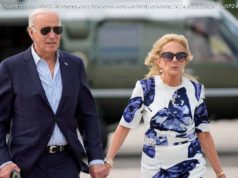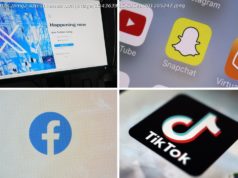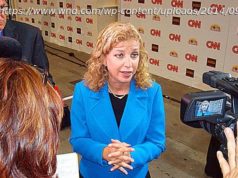Analysts say reopening border hotline could be a calculated move by Kim Jong-un to drive a wedge between Seoul and Washington
North Korean leader Kim Jong-un reopened a cross-border communication channel with South Korea on Wednesday nearly two years after it was disabled, prompting a mixed response from Beijing and the US-led alliance against Pyongyang’s nuclear provocations.
While Beijing welcomed the reopening of the border hotline as a positive sign from the North following months of inflamed tensions, Washington was sceptical about Pyongyang’s rare overture.
The hotline system, located in the truce village of Panmunjeom, was cut by Kim in February 2016 when relations deteriorated over a dispute involving the Kaesong industrial complex, which was jointly operated by both countries.
It was restored on Wednesday, a day after Seoul proposed high-level talks next week to find ways to cooperate on next month’s Winter Olympics in the South and discuss other Korean issues.
South Korea: North reopening border hotline ‘very significant’ after Kim Jong-un’s Olympics olive branch
It marked a softening in tone by Pyongyang and possible thawing of relations between the two Koreas, but analysts cautioned that it could be a calculated move by Kim to drive a wedge between Seoul and Washington, as a way to weaken their alliance and international sanctions.
Chinese foreign ministry spokesman Geng Shuang said Beijing supported efforts by Pyongyang and Seoul to use the Pyeongchang games to improve relations following North Korea’s repeated missile launches and its sixth and most powerful nuclear test last year.
In a veiled criticism of US President Donald Trump’s latest war of words with Kim, he also urged Washington to show restraint and make concrete efforts to seek a peaceful solution to the North Korea nuclear crisis, including starting direct dialogue with Pyongyang.
In his New Year’s address on Monday, Kim said he was willing to send a delegation to next month’s Winter Olympics in South Korea, but also warned he had a “nuclear button” on his desk for use if his country was threatened by the United States.
Trump shot back on Tuesday in a tweet that he had a “much bigger and more powerful” nuclear button than Kim.
His ambassador to the United Nations Nikki Haley dismissed Seoul’s offer to hold talks, calling it a “band-aid” in the absence of a commitment from Pyongyang towards scrapping its nuclear arsenal.
We had no idea, says shipping company manager about vessel seized for North Korean oil delivery
Sun Xingjie, a Korean affairs specialist at Jilin University, described Kim’s unexpected move as a stopgap measure to deal with the heightened tensions, saying he was “trying to stop water from boiling by scooping it up”.
Most diplomatic observers agreed that while reopening the hotline could keep the situation from edging closer to a nuclear stand-off, it remained to be seen whether it would result in a general easing of tensions on the Korean peninsula.
“After declaring Pyongyang as a de facto nuclear-armed state, Kim is clearly moving towards the next step of his nuclear weapons plan, which is to find ways to overcome deepening economic sanctions and sow division within the alliance between the US and South Korea,” said Zhang Liangui, a North Korea expert from the Central Party School in Beijing.
US ambassador to UN urges harder line on North Korea amid reported new missile test plan
Although Seoul welcomed Pyongyang’s decision to reopen the hotline as “very significant”, South Korean Prime Minister Lee Nak-yon said on Tuesday that the North could demand “different treatment”, apparently as a nuclear power, if rare talks took place between the two sides.
Lee Jung-nam, of the Asiatic Research Institute at Korea University, also said Kim’s overture would put Seoul’s relations with Washington in a “delicate and difficult” position due to their apparent disagreements over whether it was time to restart talks with Pyongyang.
Steve Tsang, director of the SOAS China Institute in London, also described Kim’s move as “classic divide and rule diplomacy on the part of the North Koreans”.
“Kim is clearly seeking to drive a wedge between the [South Korean President] Moon Jae-in administration and the Trump administration. This is an attempt to kill two birds with one stone – to reduce tension between the North and the South on the one hand, and increase tension between Trump and Moon on the other. Whether this will result in a general easing of tension on the peninsula remains to be seen,” he said.
Additional reporting by Associated Press and Agence France-Presse






